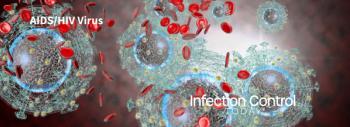
Back-to-School: An Infection Preventionist’s Guide to a Healthier School Year
I’ve spent years in hospitals, outbreak investigations, and infection control meetings. But I’ve also been in PTA meetings, school pickup lanes, and searching for missing lunchboxes under the couch. I’ve seen the germ wars on both sides of the hospital halls and the soccer fields.
Every August, I pack my kids’ backpacks with sharpened pencils, fresh notebooks, and all the hope in the world for a fantastic school year. And by mid-September? Someone’s already coughing into the macaroni and cheese, the teacher has laryngitis, and the attendance chart looks like a losing game of Battleship.
As an infection preventionist, I know exactly how and why this happens. As a parent, I know how hard it is to stop it. Kids share more than just crayons. They share water bottles, snacks, and whatever virus is currently circulating in the classroom that week. And once it starts, the chain of infection can empty schools, sideline teachers, and ripple right into our own homes.
But here’s the good news: Making schools healthier won’t require hazmat suits or bottomless budgets. Effective prevention in schools hinges on adopting sustainable habits. The kind of habits that work just as well in the kindergarten art room as they do in the high school chemistry lab.
So, before the sniffles start this fall, let’s review some real-world strategies for outsmarting the germs invading our schools.
Germs in Our Schools and Why Preventing Them is a Struggle
In 2022, approximately 5.8% of US children aged 5 to 17 missed 15 or more days of school due to illness, injury, or disability.1 That’s 4.2 million.2 When students miss that much school, it’s not just attendance records that suffer. Missed days chip away at learning, especially for children already at a disadvantage. Teachers feel it too—each absence means rearranging lesson plans, reteaching material, and trying to keep the class moving while helping the kids who have fallen behind.
While we’d like to think schools can fight back against every germ causing an early dismissal, the truth is they’re up against some steep odds. Classrooms are packed, making it impossible to keep students from sharing both supplies and space. Well-meaning parents send their children back to school with some Tylenol and a prayer, and teachers often push through illness because they don’t want to leave their class without support.
Meanwhile, many school nurses must split their time between multiple buildings, making it more difficult to identify outbreak trends early. So, the challenges abound, and we can’t bubble wrap our children or our schools. However, we can make our schools and children more resilient. We can enhance prevention efforts in schools to ensure that our kids can continue learning while the community trends of infection rise and fall.
The Solution: Layered Defenses That Actually Work
When it comes to infection prevention, there is no magic shield. Germs are opportunists, and they slip through wherever they can. That’s why the best defense is a layered one, sometimes called the Swiss cheese model 3 Picture each layer of prevention as a slice of Swiss cheese: No slice is perfect, but when you stack them together, the holes are all covered. The more layers there are, the harder it is to find a way through all the holes in the stack of cheese. The same holds true for disease prevention.
In schools, this means embedding prevention strategies into daily routines. Although none of these strategies will prevent 100% of all infections, together, they can help prevent the next school outbreak before it starts.
1. Hand Hygiene Made Routine
When it comes to preventing illness in schools, nothing beats regular handwashing. It’s not glamorous, but it really works. Studies have shown that when schools provide students with access to soap and sanitizer, along with brief, repeated reminders to use them, illness-related absences drop significantly.4
A broader review reinforces this: Schools implementing hand-hygiene programs experience a roughly 25% reduction in absences from both colds and stomach bugs.5 Even the CDC supports this simple truth: When handwashing is actively promoted throughout the day, school absences from illness go down.6 Schools that build handwashing into the day (eg, before lunch, after recess, and after using shared supplies) see fewer absences from both respiratory infections and gastrointestinal bugs.
For the younger grades, make it fun: Sing songs, raise handwashing “champions,” and even host competitions between classes. For older students, keep hand sanitizer at the entrance to the classroom, encouraging use upon entry for a “germ freer” zone.
2. Vaccinate and Educate
Vaccination remains one of the most powerful tools for protecting students and staff alike. For example, during the 2022–23 flu season, the CDC estimates that influenza vaccination prevented 6.6 million illnesses, 3 million medical visits, and 65,000 hospitalizations in the US alone .7
I cannot emphasize enough the importance of vaccination to school health. But protection isn’t just about getting the shots. It’s also about helping staff and students build prevention habits into their daily routines. For example, schools that provide vaccine education through student-led health campaigns see stronger engagement in prevention practices, such as vaccination.8
Schools should seek to involve students in creating posters about covering coughs, modeling handwashing for younger classes, or sharing “germ-busting tips” on morning announcements. They can even consider starting new clubs focused on health promotion, run by high school students interested in health-related careers. When kids see themselves as part of the solution, they are more likely to implement the prevention strategies we’re encouraging.
3. Breathe Easier: Clean the Air, Reduce the Risk
If there is one environmental change that protects against multiple illnesses at once, it’s improving air quality. Research from Italian schools found that classrooms with mechanical ventilation systems delivering 10 to 14 liters of fresh air per student per second had an 80% lower risk of COVID-19 transmission compared to those without upgrades.9
However, ventilation isn’t just for pandemic viruses. Better airflow reduces the spread of influenza, respiratory syncytial virus (RSV), and even airborne bacteria, such as Mycobacterium tuberculosis.10 Fresh air works by diluting the number of germs in a space, making it less likely anyone will inhale enough particles to get sick.
If complete HVAC upgrades aren’t in the budget, schools can open windows when weather allows, use fans to increase the effectiveness of open windows, or place portable HEPA filters in rooms that tend to feel stuffy.11 Even short “airing out” breaks between classes can make a measurable difference in reducing illness-related absences.
4. Cover When You Cough (and Other Etiquette)
Good respiratory manners never go out of style. Simple habits, such as covering coughs and sneezes with your elbow, turning away from others, and disposing of used tissues in the trash, can significantly reduce the spread of respiratory viruses immediately. In a study of elementary school interventions, classrooms that paired cough etiquette reminders with visible access to tissues and sanitizer saw a 21% reduction in influenza-like illness compared to control schools.12
The CDC also lists respiratory etiquette alongside hand hygiene as a core infection prevention measure in schools, noting its effectiveness in reducing droplet spread during high-incidence months.13 These are easy wins. Schools can post friendly reminders during flu season, keep tissues and sanitizer visible in every classroom, and make these behaviors as routine as saying “please” and “thank you.”
5. Have a Plan for Sick Days
Staying home when sick is both a preventative measure and an act of community care. While no parent or teacher likes to miss a day, clear and consistent guidelines from school systems take the guesswork and guilt out of those decisions. The CDC advises that students and staff should be fever-free for at least 24 hours without the use of fever-reducing medication before returning to school and should wait 24 to 48 hours after vomiting or diarrhea stops to prevent the spread of gastrointestinal illnesses.13
Adhering to these timelines helps contain outbreaks of both respiratory and gastrointestinal (GI) tract illnesses, which remain among the leading causes of school absenteeism.14 Reporting absences allows nurses to spot trends early, while clear communication of these rules throughout the year fosters a culture where staying home to recover is seen as an act of responsibility, not weakness. This protects classmates, teachers, and the broader community, while also allowing a sick child the rest they need to recover before diving into the next lesson.
Pulling It All Together
When we stack these slices of Swiss cheese together—hand hygiene, vaccination, cleaner air, respiratory etiquette, and clear sick policies—the gaps start to disappear. Germs have a much harder time finding their way through to the next kindergartner.
The start of a new school year always brings excitement, but it also brings challenges. The good news is that we already have the tools to make our classrooms more resilient. It doesn’t take expensive overhauls or complicated programs. It just takes consistent, coordinated action from everyone in the school community.
When we protect our health, we protect so much more than attendance numbers. We safeguard learning, friendships, and the shared moments that make school a place kids want to be. A healthy school year doesn’t happen by accident. We build it, one day and choice at a time.
References:
- Black LI, Elgaddal N. Chronic school absenteeism for health-related reasons among children ages 5–17 years: United States, 2022. NCHS Data Brief. 2024;(498):1-8. doi:10.15620/CDC/147885
- Federal Interagency Forum on Child and Family Statistics. America’s Children: Key National Indicators of Well-Being, 2023 – Demographic Background. US Dept of Health and Human Services; 2023. Accessed August 13, 2025.
https://www.childstats.gov/americaschildren23/demo.asp - The Swiss Cheese Model of Pandemic Defense. Centers for Disease Control and Prevention Foundation; 2020. Accessed August 13, 2025.
https://www.cdcfoundation.org/swiss-cheese-infographic - Gerber JS, Ross RK, Bryan M, et al. Effect of a school-based hand hygiene program on absenteeism: a cluster randomized trial. BMC Pediatr. 2012;12:52. doi:10.1186/1471-2431-12-52
- Willmott M, Nicholson A, Busse H, Gillison F, Wainwright E. The effect of school-based handwashing interventions on school absenteeism: a systematic review and meta-analysis. J Public Health (Berl). 2023;31:297-311. doi:10.1007/s10389-023-02044-7
- Hand hygiene in schools and early care and education settings. US Dept of Health and Human Services; 2024. Accessed August 13, 2025.
https://www.cdc.gov/clean-hands/prevention/about-hand-hygiene-in-schools-and-early-care-and-education-settings.html - Estimated flu-related illnesses, medical visits, hospitalizations, and deaths in the United States—2022–2023 flu season. US Dept of Health and Human Services; June 8, 2023. Accessed August 13, 2025.
https://www.cdc.gov/flu/about/burden/2022-2023.html - Rainey JJ, Chorba TL, Routh JA, et al. Vaccine confidence in the time of COVID-19: implementing a school-located influenza vaccination program in New York City. J Sch Health. 2019;89(10):794-803. doi:10.1111/josh.12810
- Buonanno G, Stabile L, Morawska L, Viola IM. School ventilation: a powerful tool to reduce COVID-19 risk. Environ Res. 2022;212(Pt A):113606. doi:10.1016/j.envres.2022.113606
- Allen JG, Ibrahim AM. Indoor air changes and potential implications for SARS-CoV-2 transmission. JAMA. 2021;325(20):2112-2113. doi:10.1001/jama.2021.5053
- Core prevention strategies in schools. US Dept of Health and Human Services; 2024. Accessed August 13, 2025.
https://www.cdc.gov/orr/school-preparedness/infection-prevention/actions.html - Talaat M, Afifi S, Dueger E, et al. Effects of hand hygiene campaigns on incidence of laboratory-confirmed influenza and absenteeism in schoolchildren, Cairo, Egypt. Emerg Infect Dis. 2011;17(4):619-625. doi:10.3201/eid1704.101353
- When students or staff are sick. US Dept of Health and Human Services; 2024. Accessed August 13, 2025.
https://www.cdc.gov/orr/school-preparedness/infection-prevention/when-sick.html - About school health: illness-related absenteeism. US Dept of Health and Human Services; 2024. Accessed August 13, 2025.
https://www.cdc.gov/healthyschools/about/index.htm
Newsletter
Stay prepared and protected with Infection Control Today's newsletter, delivering essential updates, best practices, and expert insights for infection preventionists.






